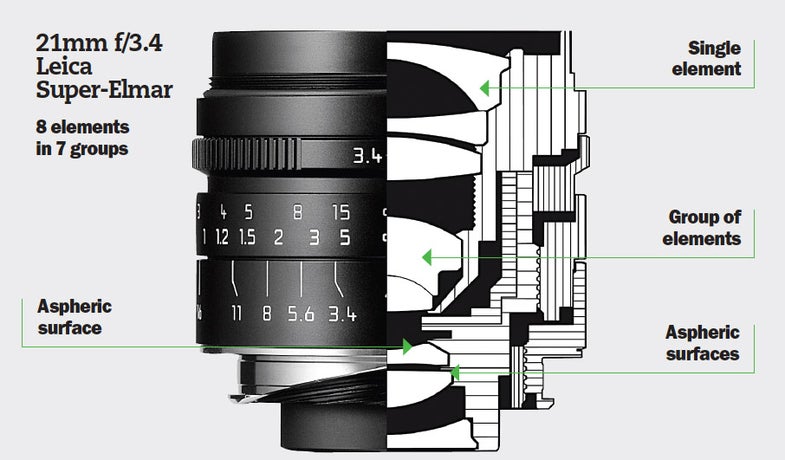Glass Glossary: Definitions For Common Lens Terms
What the lingo in our lens tests means

We may earn revenue from the products available on this page and participate in affiliate programs. Learn more ›
Apochromatic (APO): A lens group designed to correct chromatic aberrations for three wavelengths (usually red, green, and blue) rather than just one or two.
Aspheric: A lens element with a non-spherical curvature on one or both sides. Aspherics typically have less curvature at the edges than at the center. They can reduce optical aberrations and distortion. And because a single aspheric can replace several spherical lenses, it cuts down on internal reflections that can cause flare.
Barrel distortion: The bowing outward of straight lines in an image, usually most pronounced at the frame’s edges.
Chromatic aberration: Lenses can act as prisms, breaking white light into individual colors of the spectrum, a phenomenon called dispersion. Chromatic aberrations show up as color fringing, and, because the colors of the spectrum focus at different points, soften the image. Some chromatic aberrations can be lessened by stopping down to smaller apertures.
Coma: Comet-shaped blobs in the image caused when light rays fail to come to the same focus point. The term is also commonly used for flare spots.
Complex distortion: Barrel and pincushion distortion combined. In one form, moustache distortion, straight lines pincushion near the center of the frame edge, but barrel out toward the frame ends.
Diffraction: Divergence of light rays when passed through a small opening. Diffraction is a major cause of image degradation at very small apertures.
Flare: Loss of contrast, veiling fog, and bright spots caused when a bright light source shines directly into a lens.
Floating elements: An element or group of elements that moves independently of other groups and elements during focusing. Floating elements allow lens designs that minimize aberrations at the full range of focusing distances, near to far.
Geometric distortion: The characteristic stretching of the image seen at the ends of the frame in wide-angle shots. Not really a flaw, just the way light and lenses work. Can be minimized with Volume Ana-morphosis Correction in DxO Optics Pro.
Light falloff: Darkening of the image’s corners and edges due to a lens not projecting evenly across the image circle. Stopping down the aperture reduces and eventually eliminates falloff. Also called vignetting.
Low dispersion (LD), extra-low dispersion (ED), ultralow dispersion (UD), etc.: Glass specially formulated to exhibit lower chromatic aberration.
Pincushion distortion: The bending inward of straight lines in an image, usually most pronounced at the frame’s edges.
Spherical aberration: Optical flaw that causes light rays entering the edges of a lens to focus at a different point from light rays entering the center. Can be reduced by stopping down the aperture, but this can also cause the focus to shift.